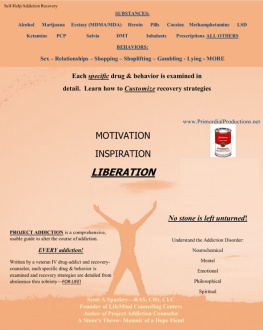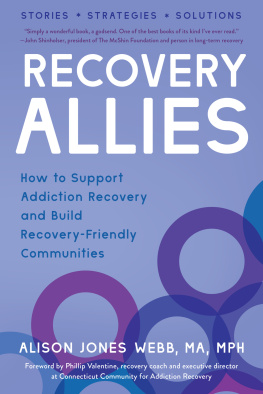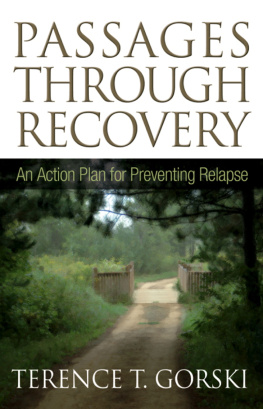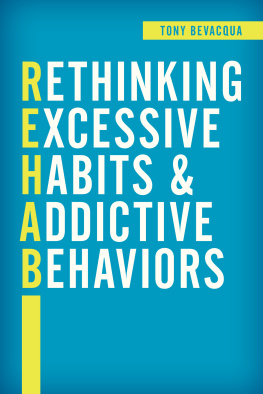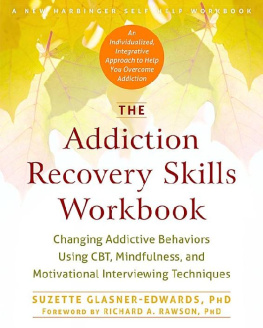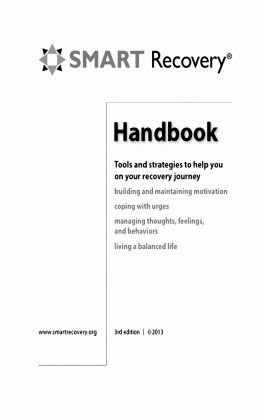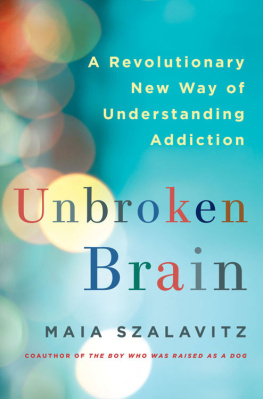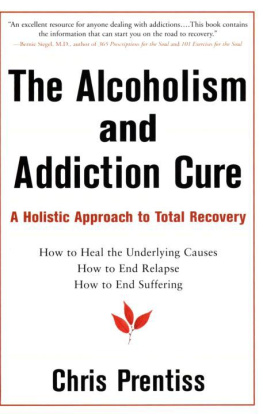Project Addiction
The Complete Guide to Using, Abusing, and Recovering from Drugs and Behaviors
Scott A Spackey
Certified Addiction Treatment Counselor (CATC)
Registered Addiction Specialist (RAS)
Clinical Hypnotherapist (CHt)
Certified Life-Coach (CLC)
Founder Project AddictionLifeMind Counseling Centers
Project Addiction
The Complete Guide to Using, Abusing and Recovering from Drugs and Behaviors
By Scott Spackey
Published by: Primordial Productions
24303 Walnut St., Suite A
Valencia, CA 91321
Telephone: 661-383-3182
Website: http://www.primordialproductions.net
E-mail:
Copyright 2016 by Scott Spackey
All rights reserved. No part of this publication may be reproduced by
any means stored in a retrieval system, or transmitted in whole or in
part, in any form or by any means, electronic, mechanical, photocopying,
recording, or otherwise without the express written consent of the
publisher, except for the inclusion of brief quotations in a review.
Print: 978-0-9968913-0-1
Ebook: 978-0-9968913-3-2
Audio: 978-0-9968913-4-9
Library of Congress Control Number: 2015953966
First Edition.
10 9 8 7 6 5 4 3 2 1
Editor: Brandon Pi Bang
This book is dedicated to youand...for Janete, she is my favorite addiction.And to my son. The man who saved my life. Twice.JSR
CONTENTS
Glossary of Terms
DOC (Drug Of Choice): The drug or behavior an individual primarily uses. The DOC is the drug they feel the most resonance with compared to other drugs.
Pain/Pleasure Principle: The driving mechanism of human behaviorto seek pleasure and avoid pain.
Psychonaut: An explorer of varying states of consciousness. (Psych: soul/spirit/mind; Nautes: sailor/navigator)
SDNE & O: Serotonin, Dopamine, Norepinephrine, Endorphins and Oxytocin; the primary neurochemicals that drugs and behaviors interact with.
Central Nervous System (CNS): The main part of the nervous system along the spine that connects to the brain. The CNS receives information from, coordinates, influences and communicates with all parts of the body.
Recovery Supporters (RSs): Family members, friends, sponsors, counselors and anyone who is involved with someones recovery experience.
Abstinence Phase (AP): The initial first ninety days of recovery, broken down into thirty day increments, 30/60/90. The abstinence phase features withdrawal, detox and preliminary adjustments.
Recovery Phase (RP): The second phase spanning the 90-180 days of recovery.
Sobriety Phase (SP): The third phase of recovery extending from 180 days through life.
Addiction Disorder (AD): A mental defect to participate in a behavior that overrides logic and reason that functions on survival mechanisms.
Addictive Personality Disorder (APD): The chronic, more severe form of AD. APD encompasses a large spectrum of desire objects and is not sustained only by a specific object or desire. It is sustained by a more innate defect of the mindthe need to compensate for deficient emotions or neurochemicals within the brain.
Brain/Mind: A term used to differentiate between the brain being physical matter and tissue and the mind being more complex as the driving force of the brain.
Thinking/Feeling Apparatus: The combined mechanisms of intellect/reason and emotions/perceptions.
Mechanism of Action (MOA): The biochemical interaction with which a drug substance causes an effect; how it binds to specific molecular targets, such as an enzyme or receptor.
Club Drug: Drugs that are mostly used by the under 30 generation at music clubs, festivals and raves such as GHB, Ecstasy, MDMA, Ketamine and others.
Marijuana/Alcohol Maintenance: The use of marijuana and/or alcohol as a recovery tool from other drugs.
Euphoric Recall: Spontaneous thoughts and memories of drug using episodes.
Lapse: A drug using episode that is brief and isolated.
Relapse: A return to using behaviors that may or may not include actual using.
Wellness: A comprehensive state of being including physical, mental and emotional fitness.
Pleasure: Sensual enjoyment, i.e. feels good, tastes good, smells good, looks good, sounds good.
Fulfillment: Pleasure that is accompanied with feelings of achievement.
Soft Drugs: Drugs that can be used recreationally by nonaddicts such as pot, alcohol and some medications. Soft drugs are not administered through injection.
Hard Drugs/Narcotic: Drugs that cannot be used recreationally and have the ability to be administered by injection such as heroin, meth or cocaine.
Ninety Day Challenge: Ninety days of total abstinence from a drug or behavior to break the bond of it within the mind.
Habitual: A recurring behavior.
Compulsion: A behavior driven by need over want.
Addiction: A behavior that stands independently of someones personal will and dominates over logic and reason.
WARNING
This book explains addiction behavior and drug using in graphic detail. If you are an addict, this book may cue using behavior. The safest way to read the drug sections is to read them in single reading sessions; the beginning of a specific section to the end in one session. If cueing (triggering) is activated, discontinue reading. It may be necessary to have a nonaddict supporter read them to you. It is also recommended to postpone reading cueing sections if youre feeling unstable.
Book 1
What, How, Who, Why
0
Down the Rabbit Hole
Little Alice fell
d
o
w
n
the hOle,
bumped her head
and bruised her soul.
Lewis Carroll , Alice in Wonderland
Addiction is a pathological disorder that affects every society and every culture on this planet and has for thousands of years. It is far more pervasive than other clinical disorders; it is a defect of brain chemistry, mental and emotional wellness, spirituality, and character loss. An addict is no more to blame for this defect than a person born with an intellectual disability, schizophrenia, or bipolar disorder. It is a defect of the human organism that is typically there at inception, but it can also be generated in the very early development of the brain and its neurochemistry.
The disorder of addiction is debilitating in every way considerable, causing suffering to the individuals afflicted, their families, concerned loved ones, and to our communities and societies as a whole. We all should address it, as we are all victimized by it directly or remotely and even contribute to its presence.
Weve come a long way in technology, science, and understanding since Alexander the Greats dispensing of opiate drugs to his forces in 330 BC. Yet as a global culture, we still maintain pitifully simplistic, unevolved, and even archaic methods of treating and dealing with the issue of addiction. Drugs and addiction seem to evolve and become more textured and complex every year and every decade, yet the

